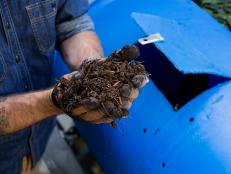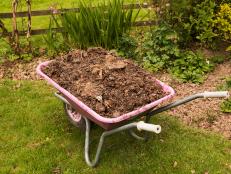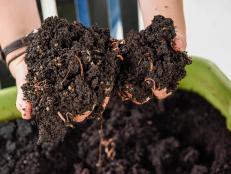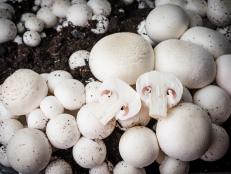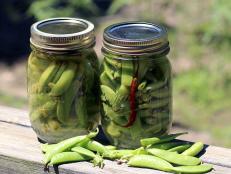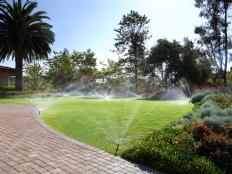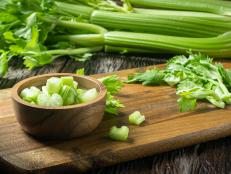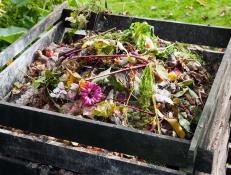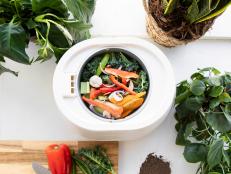How to Use Coffee Grounds in the Garden
Before taking those spent coffee grounds to your yard, learn the facts about giving your garden a caffeine fix.
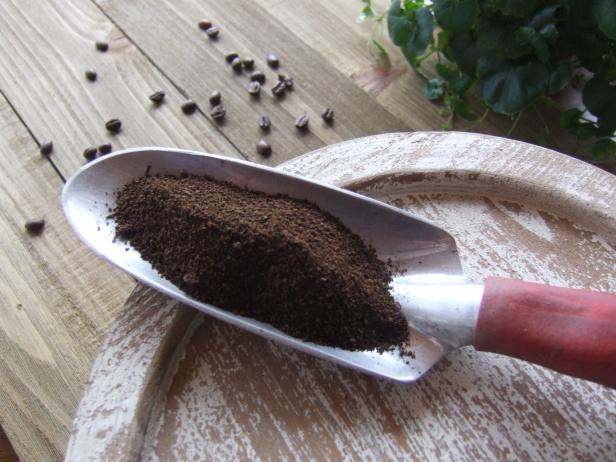
Julie Martens Forney
When adding coffee to the garden compost, use grounds, not whole beans. Although grounds can be acidic, in small amounts they won’t disrupt compost pH or breakdown processes.
If your favorite barista is bagging used grounds to go for garden use, hit the pause button before you grab a few bags. Learn what you need to know about using coffee grounds in the gardena at home.
What Coffee Grounds Do
Home gardeners have heard they can count on used coffee grounds to do all kinds of things. Spread on planting beds like mulch, grounds are said to repel cats, fertilize soil, kill slugs and keep weeds at bay. A coffee mulch is also rumored to beckon earthworms and acidify soil. Other gardeners work coffee grounds into beds, swearing it aerates and acidifies soil.
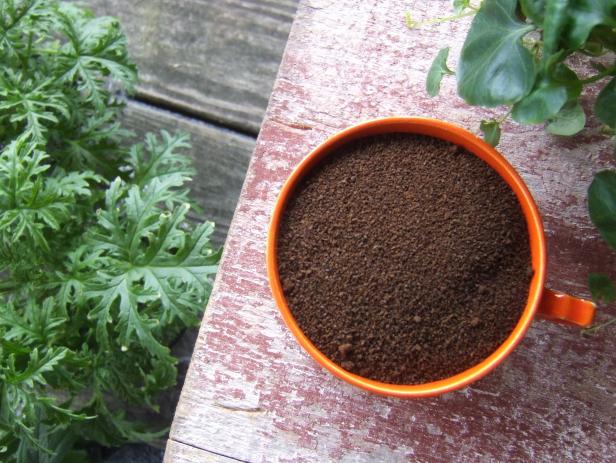
Julie Martens Forney
Save used coffee grounds to add to your compost pile along with roughly four parts chopped leaves and a handful of lime or wood ash. That’s the safest way to use them in the garden.
The Facts on Coffee Grounds
There’s limited research on using coffee grounds in the garden, and much of what has been done involves:
- Tests to determine if grounds are acidic (mostly they are)
- What happens as grounds break down (they eventually shift from acid to more or less neutral pH)
- Testing grounds on various agricultural crops (it either enhances or deters growth, depending on the plant)
As with most rumors, even the ones about coffee grounds contain a grain of truth. While coffee grounds have not been found to repel or kill pests, they do have some antimicrobial properties. In very specific controlled research conditions, grounds have suppressed some diseases (fungus rots and wilts) on spinach, bean, tomato and cucumber. Could you replicate those conditions in a garden setting? Likely not.
In terms of fertilizing soil, coffee grounds do have significant nitrogen content, which means they can help improve soil fertility. But because they also affect microorganisms in soil, plant growth and possibly soil pH, you don’t want to rely on coffee grounds as plant food.

Julie Martens Forney
It’s best to add coffee grounds, not whole beans, to compost. Coffee grounds have a high nitrogen content, along with a few other nutrients plants can use. In compost, they help create organic matter that improves the ability of soil to hold water.
Several independent pH tests on coffee grounds show that they tend to be acidic. In most cases, the grounds are too acidic to be used directly on soil, even for acid-loving plants like blueberries, azaleas and hollies.
Coffee grounds inhibit the growth of some plants, including geranium, asparagus fern, Chinese mustard and Italian ryegrass. Conversely, grounds (used as mulch and compost) improve yields of soybeans and cabbage. In other cases, grounds inhibit seed germination of clovers (red and white) and alfalfa. On the flip side, coffee grounds enhance sugar beet seed germination. The effects of coffee grounds on seeds and plants is variable, unreliable and tough to call.

Julie Martens Forney
If you want to add your used coffee filters to the compost pile, tear them into small pieces and bury them so they’ll compost faster.
Tips on Using Coffee Grounds for Plants
So what’s the right course of action with coffee grounds? Follow these tips for the best success in repurposing grounds in your garden.
- Compost Coffee Grounds. The safest way to use coffee grounds is adding to compost. Take care to add grounds so that they comprise only 10 to 20 percent of your total compost volume. Any higher, and they might inhibit good microbes from breaking down organic matter. Another way to approach this volume is to add 4 parts shredded leaves to 1 part coffee grounds (by weight).
Some folks still suggest adding lime or wood ash to the compost to offset the initial acidity of the grounds. You can do that, but it's not really necessary. If you want to do it, aim for a ratio of 1 cup of lime or ash to 10 pounds of grounds. - Spread Grounds Thinly and Cover. Using coffee grounds as a thick mulch isn’t a great idea because they tend to compact, forming a barrier that doesn’t let air or water pass. If you want to spread grounds on soil, use a thin layer (half an inch, tops) covered with a thicker layer (2-4 inches) of organic matter, such as shredded bark, wood chips or compost.
- Shift Soil pH With Grounds. If your goal is to acidify notoriously alkaline soils west of the Mississippi River, take a soil test first to know your soil’s pH. If you need to acidify it, dig grounds into soil to a depth of 7 to 8 inches.
What Plants Like Coffee Grounds?
Once you have composted coffee grounds, you can safely use them on any plant. Good candidates include your favorite shrubs, your vegetable garden and container gardens. Coffee grounds are typically too acidic to add directly to soil of even acid-loving plants, like blueberry, holly, azalea and heather.
Based on research, using coffee grounds in a thin layer covered with mulch or composted coffee grounds works well with cabbage and soybean. It’s also good with sugar beet seeds because it enhances germination.
What Plants Don’t Like Coffee Grounds?
Knowing that most coffee grounds are acid-leaning, don’t use fresh coffee grounds on plants that prefer alkaline soil. This includes asparagus, campanula, salvia, achillea and Mediterranean herbs like lavender, thyme and rosemary.
Avoid using coffee grounds on alkaline-loving trees, such as linden, ironwood, red chestnut and arborvitae. Coffee grounds used as mulch or compost inhibit plant growth on geranium, asparagus fern, Chinese mustard and Italian ryegrass. Definitely don’t use coffee grounds with these plants.








